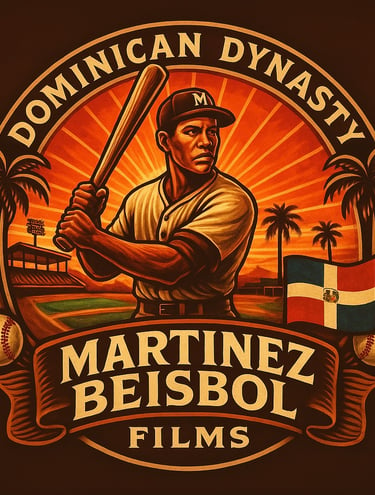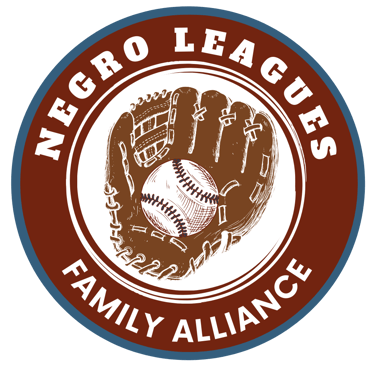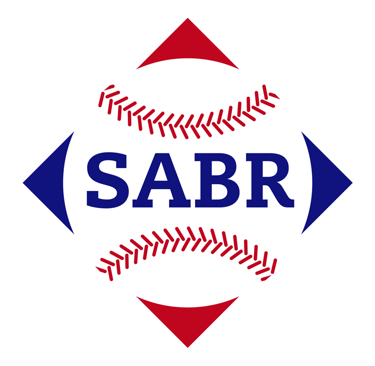Horacio Antonio Martínez Estrella
"The Rabbit"
Before Jackie Robinson, there was Horacio Martinez
Horacio "Rabbit" Martinez played professionally for several teams in the Dominican Republic from the late 1920s to 1934 including Santiago Águilas, General Trujillo, Licey Tigres, and Escogido Leones. In Cuba, he played with Hall of Famers Martin Dihigo and Willie Weels for Santa Clara, Rojos de la Habana, and Almendares. He also played in Puerto Rico, Venezuela, Panama, and Mexico.
In 1935, he is discovered by Alex Pompez and joined the Negro League's New York Cubans. His nickname was "The Rabbit" due to his speed at shortstop and ability to steal bases. He was such a sensational shortstop, in 1942, five years before Jackie Robinson would join The Brooklyn Dodgers, the Gazette said Horacio was in line for a tryout with the Pittsburgh Pirates, but it never materialized.


Eventually, he would go on to scout players for the MLB's New York Giants before they moved to San Francisco.
Horacio is credited with bringing some of the first Dominican baseball players into the MLB, including Juan Marchial, Felipe Alou, Jesus Alou, and Manny Mota - all legendary players in their own right.
Authors Recognize Horacio's Contributions to Baseball
While fate prevented Horacio from being on the plane with his brothers, Toñito and Aquiles Martínez, he could not escape the color of his skin. In the book "Away Game: The Life and Times of a Latin Ball Player," author Marcos Bretón describes Horacio as a "gentleman who was the grandfather of all Dominican shortstops but who was never allowed to play in the major leagues because he was black."
"His name was Horacio Martinez, a defensive wizard whose dazzling prime was in the 1930s and 1940s—before Jackie Robinson broke baseball's color barrier in 1947," explains Bretón. "Though Martinez is largely forgotten among modern Dominicans, he was a bright light of a generation of black, Latin players kept out of the major leagues by baseball's racist policies."


Playing with Negro League Legends
Álex Pompez, the owner of the Negro League team - the New York Cubans, was on a tour of the Dominican Republic during the winter of 1934 and witnessed Horacio playing at short for a Dominican team. He was amazed.
His teammates on the New York Cubans included the incomparable Martin Dihigo, the only baseball Hall of Famer inducted in five baseball halls of fame - Cooperstown, Cuba, Dominican Republic, Mexico, and Venezuela. Another great teammate was another great Cuban, Orestes “Minnie” Miñoso. Both went on to have legendary careers in Major League Baseball.
Horacio made a name for himself in the early 1940s when the Negro Leagues reached or exceeded the talent of major league baseball. On the East All-Stars, Horacio played with Buck Leonard, Roy Campanella, Monte Irvin, James "Cool Papa" Bell, and Josh Gibson, all Hall of Famers. He also battled against other Hall of Fame legends, including Satchel Paige and Jackie Robinson.


According to the Society For American Baseball Research, his superb defense brought him to the Negro Leagues’ East-West All-Star Game five times: 1940, 1941, 1943, 1944, and 1945. In that showcase, among a host of the greatest players from that or any era, he batted .545 (6-for-11).
Before Jackie Robinson
Cuban and Dominican players were already blazing a path for future players to thrive and prosper between the late 1800s through the 1940s before Jackie Robinson crossed the color barrier line in MLB in 1947.
Professor Adrian Burgos Jr. of the University of Illinois says, "The arc of Horacio Martínez's life in U.S. professional baseball is a powerful reminder of how deeply Latinos were affected by the exclusionary color line that divided the game in the States."
"Martínez made his name playing for the New York Cubans in the Negro Leagues. Yet his impact extended well beyond his playing days. In fact, Martínez is a key figure in the transformation of the Americas' game, as he helped to construct the Dominican talent pipeline that forever changed baseball."


Scouting For New York / SF Giants
While Horacio's physical appearance prevented him from being signed to the MLB, he eventually became Pompez's scout in the Dominican Republic, finding him the best talent, including the Alou brothers, Luis Marcial, Manny Mota, and more. Many would go on to not only get signed into the MLB but became enshrined forever into the MLB's Hall of Fame.
While working as the athletic director for the University of Santo Domingo, Horacio, scouting for the Giants, discovered Felipe Alou, a pre-med student. Felipe's brothers Jesus and Mateo "Matty" would soon follow. Eventually, all three would end up in the Giant's lineup.
According to the book "Cuban Star" by Burgos, Felipe would also become the first Dominican to manage in the majors with the Montreal Expos as their most winningest coach and later the San Francisco Giants. Juan Marichal, another find by Horacio, would win 243 games as a pitcher in the majors. In 1983, he was the first Dominican inducted into the MLB Hall of Fame.


The Struggle
Before all the baseball milestones, the Alou brothers and other dark-skinned Latinos would struggle on their way to the mountaintop - often wondering if playing baseball was worth the trouble due to Jim Crow laws that forbade integrated facilities and interracial competition.
Local police enforcing these rules prevented Alou and his black American teammates from dressing in their team's locker room and playing games in certain cities.
"In fact, the trio was forced to observe their white teammates compete from the park's "colored" section in the outfield bleachers," Burgos said. "When local officials refused to budge, the Giants were forced to ship Alou back to Florida and reassign him to another farm team."


Never Forget
Disenchanted, Alou considered quitting on the ride back to Florida and thought it was best to resume the pursuit of his college degree. However, Horacio and Pompez talked him out of it, and the rest is history. As a result, Pompez and Horacio recognized the value of teaching cultural literacy and rudimentary English language skills to new players unfamiliar with the language and cultural barriers in the United States.
"There are American black players who have been elevated to the Hall of Fame, who have been recovered from the forgotten, and that work has been done by Americans," Alou explained to Bretón. "But we don't have and will never have that kind of representation to promote a Horacio Martínez."
"He wasn't just some scout. He was a great athlete and spoke a great deal to me before I left to play in the United States. The [time] was back in the 1950s when there was so much racism in the United States, but I came here aware of all those things because I had a great teacher. I was his first player signed to make it to the big leagues, and for me, it was like I was on a mission."


The Legacy
According to SABR, in July 1993, Juan Marichal described the poignant end of Rabbit’s scouting career to authors Marcos Bretón and José Luis Villegas.
“When other scouts were earning twenty-five thousand and thirty thousand dollars a year, Horacio was only earning nine thousand dollars. So when the Giants were looking to liquidate some of their scouting positions, they were going to retire Horacio at half his salary. I was out of the organization but the Giants asked my opinion and I told them they should retire Horacio at his full salary because he didn’t even earn a third of what other scouts were earning.
And so they did, but [before that] when the Giants offered me a job [in the late 1970s] they were going to release him but I didn’t permit that. For me, Horacio was like a father and I wasn’t going to take his job away from him. He was the best scout they ever had.”


Proud Member of the




The Martinez Brothers: The Untold Baseball Story of Talent, Tragedy, & Legacy
Proud Member of the


